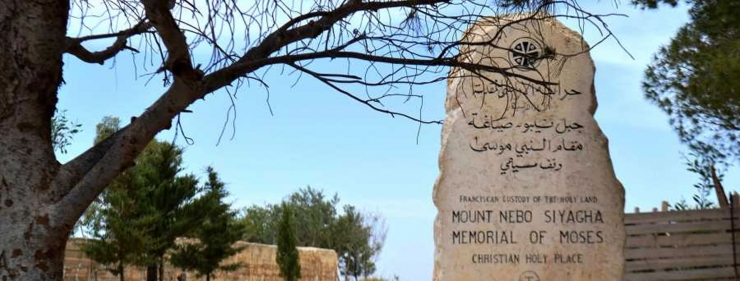From Mount Nebo’s windswept promontory, overlooking the Dead Sea, the Jordan River Valley, Jericho and the distant hills of Jerusalem, Moses, ‘the servant of the Lord’ and ‘the friend of God’ (Deuteronomy 32:49 and 34:5) viewed the Holy Land of Canaan that he would never enter.
He died and was buried in Moab, “in the valley opposite Beth-peor”. His tomb remains unknown. After consulting the Oracle, Jeremiah reportedly hid the Ark of the Covenant, the Tent and the Altar of Incense at Mount Nebo.
Mount Nebo became a place of pilgrimage for early Christians from Jerusalem and a small church was built there in the 4th century to commemorate the end of Moses’ life. Some of the stones from that
church remain in their original place in the wall around the apse area. The walls and floors are decorated with beautiful mosaics. The church was subsequently expanded in the 5th and 6th centuries into the present-day large basilica with its stunning collection of Byzantine mosaics.
The serpentine Cross, which stands just outside the sanctuary, is symbolic of the bronze (or brazen) serpent taken by Moses into the desert and the cross upon which Jesus was crucified.


